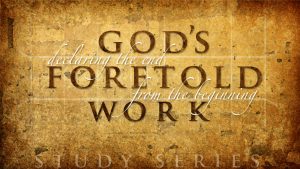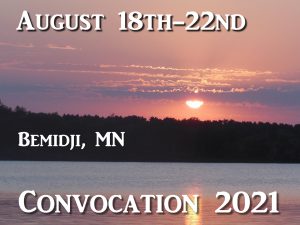Have you come across the hermeneutic that this author advocates? If you spend some time reading his stuff (not just this link) there are some interesting nuggets that I think are very helpful relating to his Israel centricity and eschatological focus. However, what is completely shocking to me is that, like N.T. Wright, he ends up in replacement theology and partial preterism after making powerful arguments for the New Testament’s eschatological lens and Israel-centric message. It’s so weird how he seems to recover key parts of the message and then lose everything…
I‘ve not looked into this beyond the one article and the follow up points by his readers. I know a little of this perspective from other things I’ve read along this line.
I am always careful of the natural tendency to over-correct. When an error or misplaced emphasis is detected, the tendency is to over-correct so that the proverbial baby goes out with the bathwater. This happened to some extent with the new perspective on Paul, and it’s happening now again with the new emphasis on the corporate / community emphasis that aims to turn the church from its tendency towards individualism and inwardness to engage the culture as salt and light with a greater militancy towards social justice. In terms of eschatology, it would tend to fit a more post-millennial optimistic orientation. It’s the old tension between historical progressivism (the gradual leavening of the dough) versus apocalyptic transformation through travail and new birth, judgement, crisis, death and resurrection.
Criticisms and proposals for keeping the ship on course and “relevant” to the changing (more enlightened?) intellectual climate seem endless. That is why I despair of anything short of a full restoration of a lost apocalyptic context. That is why I proposed the analogy of a diamond to its appropriate setting. Even out of its setting, the gospel is powerful and beautiful. It continues to have a faithful working in every generation. But much of the glory is lost when the diamond is not viewed in its proper (divinely ordained) setting. That setting is the apocalyptic vision. It is apocalyptic, not only because it is set in the context of judgment and restoration, but because it depends entirely on the Spirit of revelation. Part of the scandal of the gospel is that Christ has indeed come, but the world, at least in its outward structures, remains unchanged. That’s the challenge of the apocalyptic mystery of the gospel presented to first century Israel. As correctly expected, it is the day of the Lord that will change the world, but the scandal of the gospel is that Christ has come and brought the power of that coming age into the life of the believing community, even while the world continues in its rebellion.
It is the presence and power of that still coming future that has come in unexpected advance of the day of the Lord by the Spirit of revelation. The presence of the kingdom is powerfully witnessed by the acts of the Holy Spirit. The proof of the kingdom’s hidden presence (“mystery of the kingdom”) is in the evidence and demonstration of a life, a love, a wisdom, and a power that defies natural explanation. This changes everything, even while the outward structures and norms of this present evil age remain. The world’s boast of impunity in the face apparent ‘non-fulfillment’ is the scandal that the preacher of an apocalyptic gospel must bear, in patient waiting for the PUBLIC and visible vindication of the Word of God. In the meantime, the church gives witness to the miracle of fulfilled prophecy, as “the testimony of Jesus is the spirit of prophecy.” In other words, things are right on course; nothing has failed, but God is hiding His mystery from the wisdom of this age, even while He reveals it to babes. It pleased God that the gospel ‘as a revealed secret contained in the writings of the prophets’ (Ro 16:25-26; 1Cor 2:7-8) should be fully verifiable by comparing scripture with scripture, here a little and there a little. Christ decodes the OT with such compelling evidence as to leave the hearer without excuse.
With Israel’s restoration as a nation and the developing Mid-East conflict running exactly according to the path predicted in prophecy, we have come full circle. With some important differences, we are where the sectarians of the Qumran communities were in the century before the fall of Jerusalem, and that is why I find knowledge of their perspective so helpful for NT background, that in turn opens to better view the NT’s approach to a revelation of an OT mystery that has come to light in Christ, as pieces to a prophetic puzzle. In their outlook, they anticipated the view early church’s expectation of an imminent tribulation that would climax in the world changing day of the Lord. This perspective was all but lost after the fall of Jerusalem, and not much revived until the resurgence of historic premillennialism in the late 19th century.
The “given” of an impending unequaled tribulation centered upon Jerusalem and climaxing in the great and notable day of the Lord formed the backdrop to an apocalyptic mystery that reveals the manifold wisdom of an eternal purpose that frees the heart, even as it magnifies the glory of God in His wise use of the falling and rising again of Israel to effect the inter-advent salvation of the gentiles (Ro 9:11; 11:25 – 12:2). Therefore our occupation with the apocalyptic perspective of the NT is no new swing of the theological pendulum; it is the recovery of the original expectation and vision of the glory of God.
There is evidence, even in the NT, that the hope of a soon return of Christ began to erode with what scholars call the ‘crisis of the delay of the parousia.’ When Jesus did not come, personally and finally, in immediate connection with the fall of Jerusalem, many began to be troubled. Some believe this is what Peter is addressing in his second epistle when he says “one day is with the Lord as a thousand years.”
After the collapse of Jerusalem and the complete eviction of the Jews from the city by the Romans, to interpret the prophecy literally after this would mean that Christ’s coming could no longer be expected as potentially very soon. During the long centuries of Jewish absence from the land, we may expect that it was very attractive to interpret prophecy in a way that dispensed with the preliminary signs connected with an Antichrist invasion of a literal Jewish Jerusalem. Still, we can document that a rare few vigorously held forth for the literal interpretation of prophecy, despite what appeared at that time seemed very remote.
Of course, ever since the modern miracle of the Jewish repatriation of the Land, the obstacles for the literal interpretation are fast disappearing. Except for the presence of a Jewish temple and restored sacrifice, we are now where they were then. The only difference is that the early disciples could not conceive of a generation passing before a presumably final judgment on Jerusalem, which was naturally associated with the end of the age and the Lord’s return. Whereas today, and precisely because of the apparent failure the Lord’s return in connection with the destruction of Jerusalem, we have modern preterism in both its partial and complete forms. Of course, liberal theology is completely unimpressed with preterism’s effort to save Jesus’ infallibility as a prophet. In their view, He simply missed it. On the other hand, the world is completely emboldened by the church’s divisions over questions of eschatology to dismiss the subject entirely. Modern “apocalyptic movements” are lightly dismissed as eccentric fringe groups with a history of disappointed and often destructive false alarms. Yet, for all of this, we are on the threshold of the most abundant fulfillment of prophecy the world has ever seen.
As they were then, so now are we living under the looming cloud of an impending world crisis over the trembling cup of Jerusalem. But this time, the virgins are more asleep than ever, as the church is completely disunited in its voice. For some two hundred years before the advent of Jesus, the sectarians of the recently discovered Qumran communities lived in the Judean desert in expectation of an imminent Roman destruction of Jerusalem. They considered the city doomed for reasons of covenant defilement and disobedience. They weren’t wrong. The power of the fourth kingdom was about to descend on Jerusalem with all its force. This is precisely where we are today but the world and the church could hardly be more fast asleep, exactly as prophecy said it would be. Though partly fulfilled, the now revealed mystery in its latter stage is having again the same profound effect of being hidden from the wisdom of this age, even while it is being confirmed to His sheep.
As Dalton Thomas well said, “it’s Germany 1929” (some would say much closer to 39). I fear for any view of the faith that is so blind to the place and role of Israel that it cannot see in current trends the inexorable build up to the final world rebellion against the holy covenant. Who will sound the mid-night call? Who will be found giving the master’s household their “meat” in due season? Who will prepare the way of the Lord? That’s the call, or at least a central part of the church’s stewardship for this hour.
Not the progressivism of modernity but a Christ centered gospel that is strategically set in the context of God’s everlasting covenant with Israel, which cannot attain completion apart from a final crisis over Jerusalem that is destined to ensnare and drag all nations into its vortex. That’s where I believe the Spirit is laying renewed emphasis. An ethic and a faith that is not apocalyptic in its orientation is not the faith of the NT, and should not wonder if it lacks the urgency and power of the early church. Apart from that original context, the quest to make the gospel relevant becomes irrelevant.
A view of scripture that is so blind to the terms and conditions of the everlasting covenant as to deny prophetic significance to the modern presence of the Jewish state is inexcusable. It raises the question of when our wranglings over questions of interpretation become more than academic, but take on a moral and spiritual component that will be greatly required of the last generation, as neglect of the mystery has taken a serious toll on all past generations of the church, known to Jews of the middle ages as “the arrogant kingdom” (Ro 11:25).
Reggie




